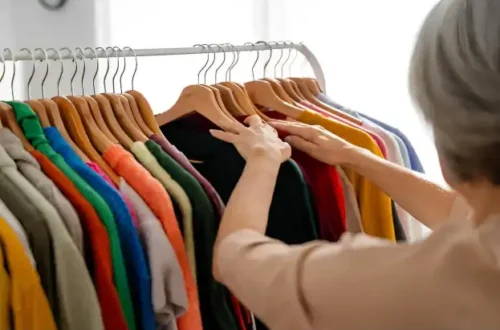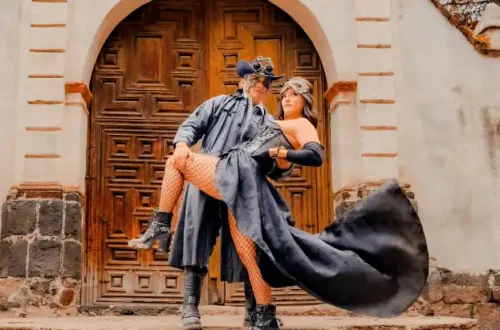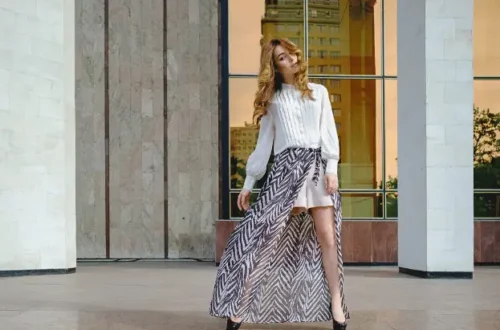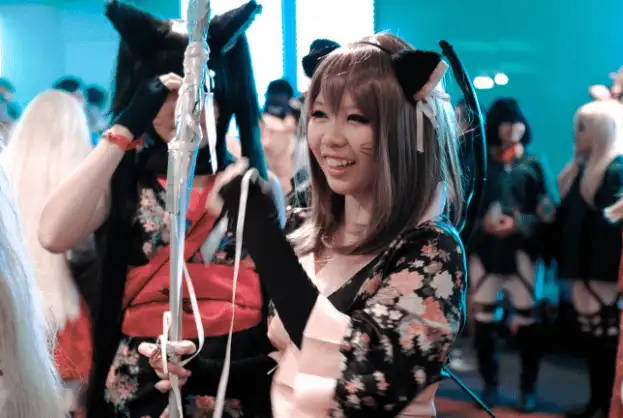
Kawaii Clothing Trends: How to Dress Cute & Confident
Kawaii fashion originated in Japan in the 1970s and has since become a global trend. It’s characterized by cute, colorful, and playful clothing that often features pastel colors, oversized accessories, and quirky patterns. The word “kawaii” itself means “cute” in Japanese, and the style represents more than just clothing—it’s a lifestyle. Kawaii fashion is loved for its fun, youthful vibe that makes anyone feel cheerful and lighthearted. It’s not just a fashion type; it’s a way to express joy and positivity through the clothes you wear.
Table of Contents
2. The Origins of Kawaii Fashion: A Journey to Cuteness
Kawaii fashion has its roots deeply embedded in Japanese culture, starting as a movement in the 1970s. The word “kawaii” itself means “cute” in Japanese, and over time, it has become a defining cultural aspect, not just for fashion but also for art, behavior, and even language. The rise of kawaii as a style can be traced to the emergence of youth subcultures in Japan, particularly those in Tokyo’s Harajuku district.
Initially, kawaii fashion was perceived as a form of rebellion by young girls who sought to escape the traditional, conservative attire expected in Japan. These girls embodied a style that was playful, colorful, and unapologetically cute, characterized by oversized bows, frills, and pastel colors. Over the years, kawaii fashion has evolved from a rebellious statement to become an influential, global trend, evident in various fashion styles worldwide.
The popularity of kawaii kanji—Japanese characters often associated with cuteness—also played a significant role in shaping this trend. These kanji symbols appeared on clothing, accessories, and even home decor, adding a layer of charm and whimsy to the designs. The Kawaii movement began influencing everything from mainstream fashion to pop culture, bringing Japan’s unique style to the global stage.
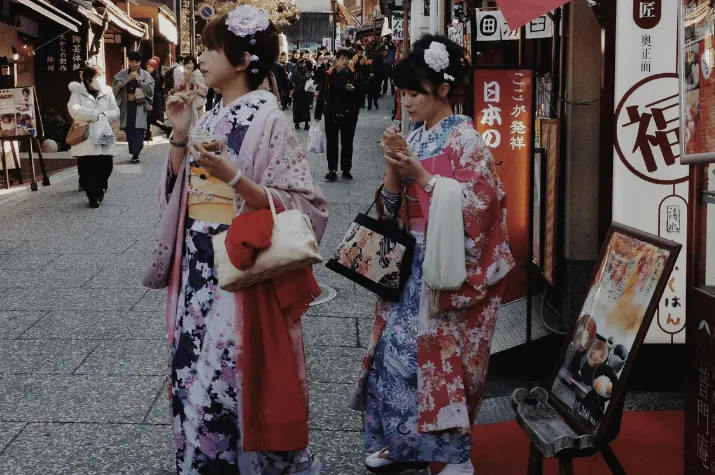
3. Key Features of Kawaii Fashion: What Makes It So Cute?
At its core, kawaii fashion is all about embracing Japanese cuteness. It’s a style that celebrates youthful innocence and joy through clothing that is often described as adorable and whimsical. Here are some of the key features that define kawaii fashion:
- Pastel Colors: Soft, light hues like baby pink, lavender, mint green, and sky blue dominate Kawaii fashion. These colors evoke a sense of sweetness and calm, contributing to the overall cute vibe.
- Oversized Accessories: From big bows and hair clips to giant plush bags, oversized accessories are a staple in Kawaii fashion. These accessories add a fun and exaggerated flair, making every outfit more playful and engaging.
- Cute Motifs and Characters: You’ll often see kawaii characters, such as adorable animals, cartoon faces, and even food items, on clothing. These playful designs add an extra layer of cuteness, allowing people to express their personality through their outfits.
- Layering and Frills: Kawaii fashion often features layers, such as skirts worn over tights or dresses with frilly edges. This gives the style a sense of fullness and cuteness, making the wearer look as though they’ve stepped out of a pastel-colored dream.
These elements work together to create kawaii fashion styles that are not only visually appealing but also evoke a sense of fun and positivity. The overall goal of kawaii fashion is to make the wearer feel happy and to spread joy to those around them.
4. Popular Kawaii Substyles: Which One Is Right for You?
Kawaii fashion isn’t just a single look—it has evolved into several substyles, each with its unique twist on cuteness. Here are some of the most popular kawaii fashion types:
- Yume Kawaii: Often referred to as “dreamy cute,” this style is inspired by fantasy and fairy tales. It’s characterized by soft colors, lace, and designs that resemble something out of a magical world. Yume Kawaii often features stars, moons, and clouds, giving it a dreamy, otherworldly aesthetic.
- Gyaru: A bit edgier than traditional kawaii fashion, Gyaru is influenced by Western fashion and often involves bleached hair, bold makeup, and glamorous accessories. This substyle combines kawaii cuteness with a more daring and more confident look.
- Mori Kei: Meaning “forest style,” Mori Kei embraces earthy tones and nature-inspired elements. Think of flowy dresses, floral prints, and oversized cardigans. This substyle brings a cozy, whimsical vibe that’s perfect for those who love to be surrounded by nature.
- Shibu Kawaii: This style is inspired by Tokyo’s Shibuya district and represents a more modern, street-style interpretation of Kawaii fashion. It blends kawaii with a youthful, urban look, incorporating casual wear such as oversized shirts and denim alongside cute accessories.
5. The Global Impact of Kawaii Fashion
What started as a youthful rebellion in Japan’s Harajuku district has now become a global phenomenon. Kawaii fashion has influenced not just clothing but art, music, and even food. The spread of kawaii culture around the world has introduced people to a new way of thinking about fashion: one that’s joyful, playful, and full of personality.
Where to buy kawaii clothing has become a common question for people worldwide, and many online stores now cater specifically to kawaii enthusiasts, offering a range of products from pastel dresses to accessories adorned with kawaii kanji and cute characters. Major fashion cities, such as New York, London, and Paris, have adopted elements of kawaii style, while social media platforms like Instagram and TikTok are filled with kawaii-inspired influencers showcasing their unique takes on the style.
Kawaii fashion’s global impact extends beyond clothing. Its influence can be seen in pop culture, from music videos to animated films, where characters often sport kawaii-inspired outfits. Its upbeat and carefree aesthetic makes it universally appealing, and it continues to inspire creative expression worldwide.
6. How to Wear Kawaii Fashion in Your Everyday Life
Kawaii fashion is incredibly versatile and can be adapted for various occasions, including school, socializing with friends, or casual outings. Here are a few tips to help you incorporate kawaii elements into your everyday outfits:
- Start Small: If you’re new to Kawaii fashion, begin with small accessories, such as a cute hair clip or a pastel-colored scarf. These simple items can make a significant difference in your appearance without being too bold.
- Mix and Match: Don’t be afraid to mix Kawaii fashion pieces with your everyday clothes. Pair a pastel sweater with your favorite jeans, or add a cute animal-themed bag to a simple dress.
- Layering is Key: Layer your outfits to add a playful touch. Combine frilly skirts with tights, or wear a cute jacket over a kawaii t-shirt. Layering provides more options for experimenting with various styles.
- Focus on Accessories: Kawaii fashion is all about the details. Add oversized bows, colorful socks, or quirky shoes to your outfit to give it a kawaii flair.
7. Why Is Kawaii Fashion So Popular Among Young People?
Kawaii fashion resonates deeply with young people because it offers a sense of playfulness and creativity that is often missing in more traditional styles. It allows individuals to express their personality and mood through their clothing, and its emphasis on positivity and cuteness promotes a sense of joy and happiness. Kawaii fashion encourages embracing innocence and individuality, making it perfect for those who want to stand out in a fun, non-conformist way.
The global popularity of kawaii fashion, especially among school-age children and teenagers, is also fueled by the influence of social media, where cute outfits are regularly shared and celebrated. The accessibility of kawaii clothing online has made it easier than ever to experiment with the style, further contributing to its widespread appeal.
8. Kawaii Fashion Trends: What’s Hot Right Now?
Kawaii fashion is constantly evolving, with new trends emerging all the time. Some of the hottest trends in kawaii fashion right now include:
- Pastel Goth: Combining kawaii pastel colors with darker, goth-inspired elements, pastel goth fashion is a unique twist on the classic kawaii look.
- Vintage Kawaii: A blend of retro fashion with kawaii elements, featuring items like polka-dotted dresses, puffy sleeves, and bright accessories.
- Tech-Inspired Kawaii: With the rise of digital culture, kawaii fashion is now incorporating futuristic, tech-inspired designs, including holographic bags and pixel art accessories.
9. Kawaii Fashion: Where to Find It and How to Start?
If you’re looking to dive into kawaii fashion, there are plenty of places to explore. Many online stores, such as Kawaii International and Kawaii Clothing Shop, offer a wide range of kawaii-inspired pieces, including dresses and accessories.
- Kawaii Clothing Stores: Websites like Kawaii Market or YesStyle offer international shipping for kawaii items, making it easier for fans worldwide to access these stylish pieces.
- DIY Kawaii: You can even create your own kawaii clothing by adding cute embellishments, like embroidered flowers or character patches, to your clothes.
Kawaii fashion isn’t just about buying the right clothes—it’s about expressing yourself and having fun with your style.
Conclusion:
Kawaii fashion is more than just a look; it’s a celebration of fun, positivity, and self-expression. Whether you’re experimenting with pastel colors, cute accessories, or the latest kawaii substyles, this fashion trend allows you to express your unique personality playfully and joyfully. So why embrace the cutest trend around and add a little kawaii magic to your wardrobe today?
Related Posts
What is a kawaii style?
Kawaii style is a Japanese fashion trend that focuses on being cute and playful. It uses pastel colors, frilly clothing, and fun accessories. The look is sweet, cheerful, and full of personality.
What is the difference between kawaii and Harajuku?
Kawaii is a style focused on cuteness and innocence, while Harajuku refers to a whole fashion district in Tokyo known for many creative styles. Harajuku includes kawaii fashion but also other bold and edgy styles.
What do kawaii clothes look like?
Kawaii clothes often have pastel colors, big bows, and playful prints like animals or cartoon faces. You’ll see lots of frills, skirts, and soft fabrics. The outfits look sweet, fun, and imaginative.
What is the difference between cute and kawaii?
“Cute” is an English word used broadly for anything adorable. “Kawaii” is a Japanese word with a stronger cultural meaning that includes fashion, art, and behavior. Kawaii has a more defined, playful style.



